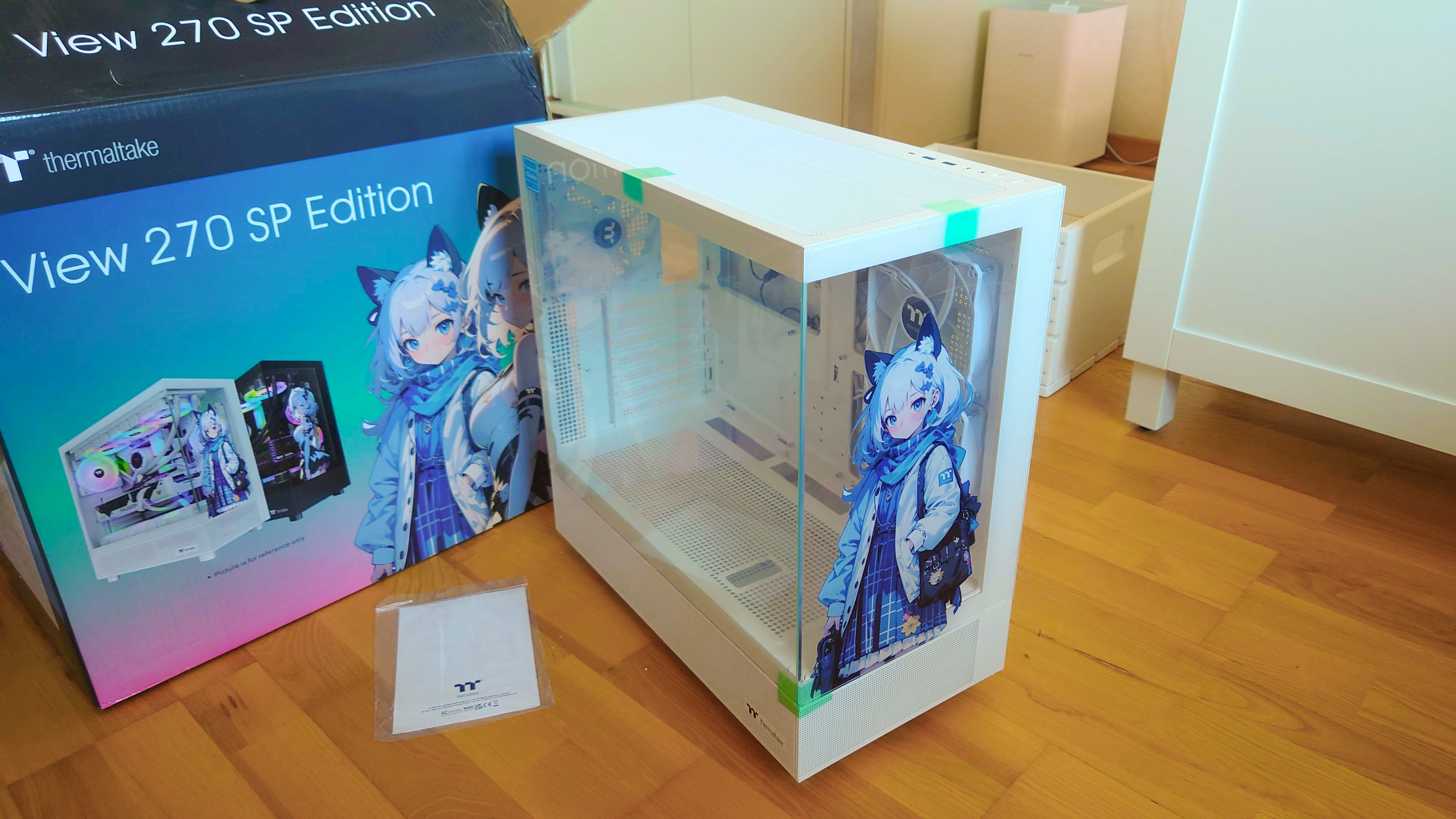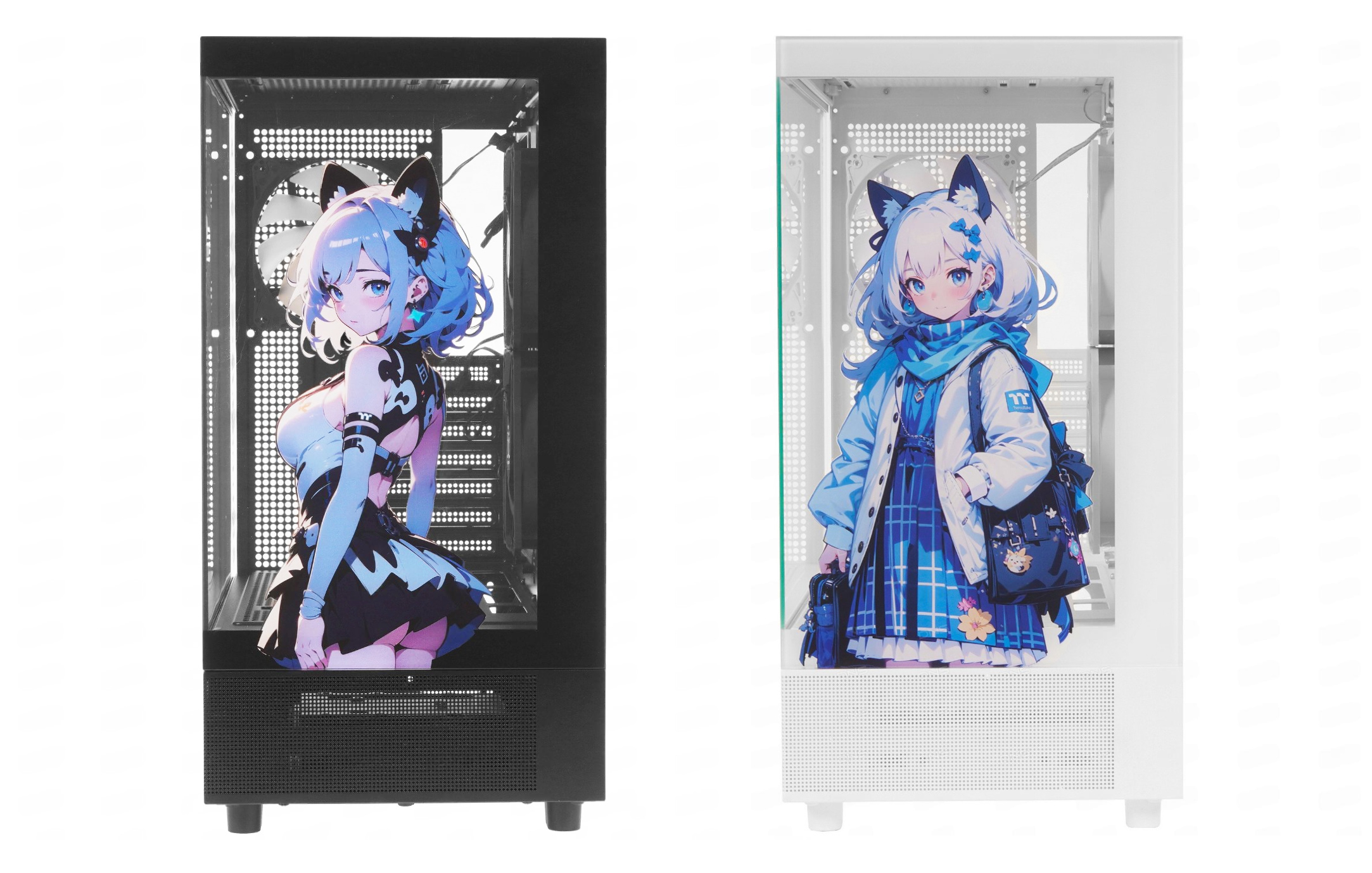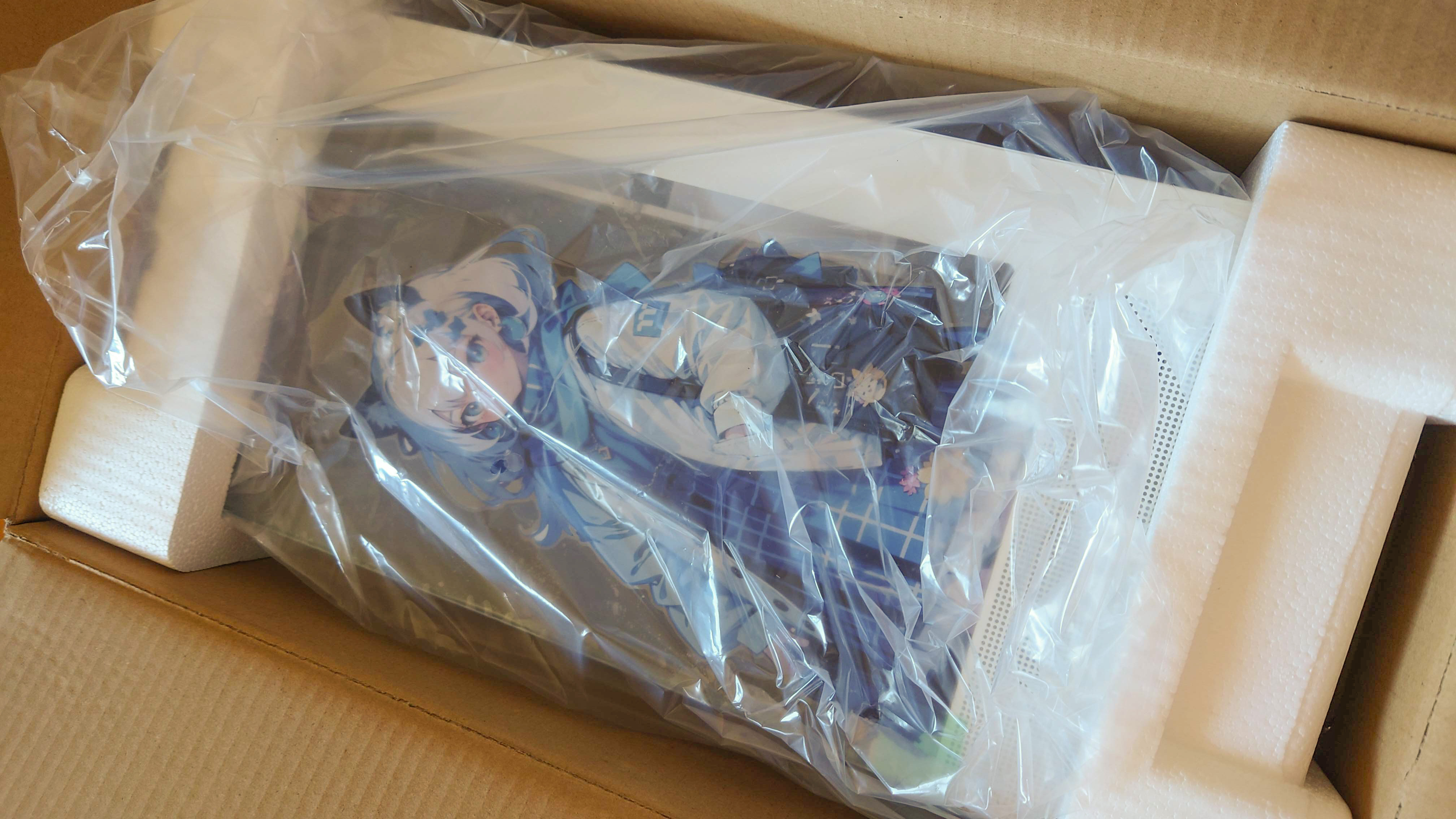Thermaltake’s Anime Sticker Controversy: The AI Art Debate

Neural networks are changing the gaming industry faster than ever, and now they’re even affecting PC case designs. The Thermaltake View 270 SP Edition Snow is a striking example of how companies are incorporating AI-generated images into their products. But is this ethical and fair to consumers? Let’s take a closer look.
An Anime Sticker: Hoping No One Notices?
I bought this case for its stylish design featuring what seemed like a high-quality anime illustration. However, upon unboxing and examining it closely, I noticed clear signs that the artwork was AI-generated:
- Anatomical – The girl’s hands are tucked into her pockets, but the pockets are positioned in a way that makes it impossible for her hands to fit inside.
- Distorted details – Accessories, decorations, and even flowers appear artificial, with illogical shapes.
- Random “parasite” elements – Some details resemble well-known symbols (like a Pikachu face), a common artifact in AI-generated images.
- Lack of logic – And seriously, why does she have two backpacks?
The version of the artwork for the black color case looks more believable but still exhibits signs of AI generation.

Nowhere on the packaging or product description does it mention that the illustration was created by AI. This raises an important question: Should manufacturers disclose the origin of their artwork?
AI vs. Copyright: Who Wins?
The issue of authorship in AI-generated images remains unresolved. AI models are trained on millions of images, many of which belong to real artists—without the AI user or model developer having rights to them. The problem is that companies are not required to disclose the datasets used to train these models.
Unlike traditional art, where authorship is strictly regulated, the AI art landscape is still a gray area. Some laws and platform policies (like Steam’s) are already being discussed to require companies to label AI-generated images and disclose datasets. However, until such regulations are in place, companies seem willing to cut costs on artists without informing consumers.
The Economics of AI Art: Where’s the Benefit?
Thermaltake is not the only company using AI-generated art. Hiring a professional artist for a custom design can cost anywhere from a few hundred to several thousand dollars, depending on the complexity and reputation of the artist. AI-generated art, on the other hand, is incredibly cheap—though high-quality prompts and processing can still require significant computing power.
However, modifying AI-generated images can sometimes be just as time-consuming as drawing from scratch. For example, fixing the pocket in Thermaltake’s artwork isn’t a quick task. But since most people won’t notice the flaws, it’s often deemed “good enough.”
Should Gamers Be Concerned?
At the moment, there’s no real harm in AI-generated PC case art—nothing is stopping you from enjoying your build. However, for anime fans and those who appreciate unique, high-quality illustrations, this trend could be disappointing—especially if AI-generated designs completely replace human artists.
If fewer artists receive commissions, their numbers may dwindle. And then, who will create something truly new? AI can remix and replicate, but it doesn’t innovate.
Here’s what you can do:
- Demand transparency – Companies should disclose if their artwork is AI-generated.
- Support human-made art – Consciously choose products featuring artwork created by real artists.
- Follow legal developments – Regulations on AI-generated content may change in the coming years.

A Warning Sign or Just the New Normal?
The Thermaltake View 270 SP Edition is just one example of how AI is gradually changing the industry. Perhaps, in the near future, AI will fully replace artists in mass-market designs, making AI-generated case stickers the norm. But for now, this is just the beginning of a conversation worth having.
What’s your take on AI art in gaming accessories? Share your thoughts!
Bonus: But What About the Case Itself?
So much has been said about the artwork, but what about the case? It comes pre-installed with three fans, which are quite valuable nowadays. The cooling performance is solid, and components don’t overheat. The build process is convenient. The metal quality is good. And yes, it looks fantastic.